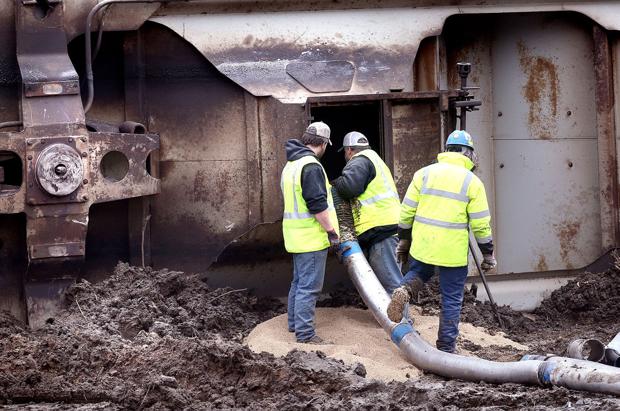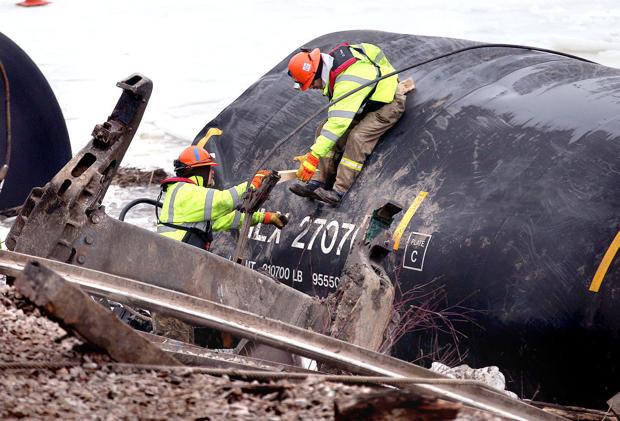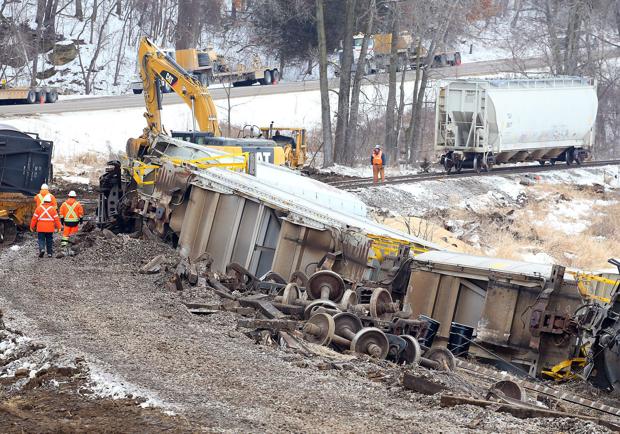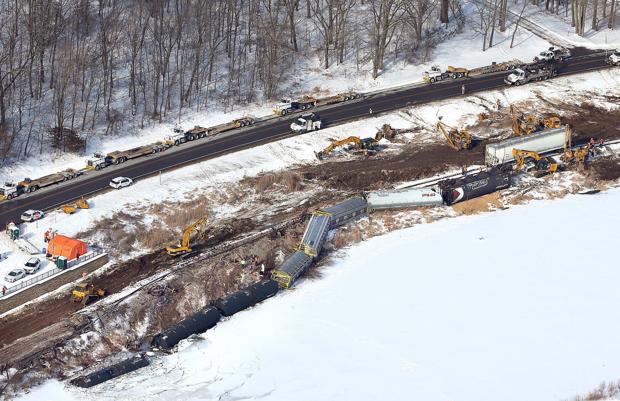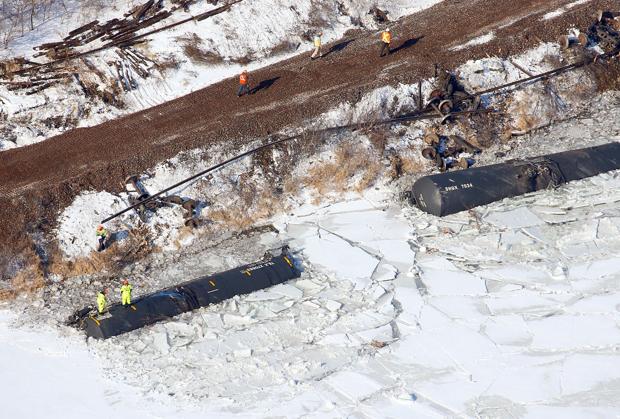CHESTER, Pa. — An Amtrak train, southbound at high speed on Sunday morning, slammed into construction equipment on the tracks near Philadelphia, killing two track workers and wounding more than 30 passengers, the authorities said.
A team of investigators from the National Transportation Safety Board arrived at the scene on Sunday afternoon to determine why the equipment, a backhoe, was on an active track. The backhoe was struck by Amtrak’s Train 89, known as the Palmetto, which left New York City on schedule about 6 a.m., bound for Savannah, Ga.
Passengers said the train was hurtling along with no sign of trouble before the sound of a crash, followed by a shuddering deceleration. The crash left the front of the engine crumpled, its windshield shattered and riders in the front two cars thrown to the floor.
“The direct impact was big,” said Adriene Hobdy, a passenger. “It was terrible, absolutely terrible. All you felt was boom, boom, boom, boom. Our windows flew out.”
The crash disrupted train service between New York City and Wilmington, Del., for much of the day, but Amtrak was working to restore service in time for the Monday morning commute.
The two Amtrak workers killed were an operator of the backhoe and a supervisor, said Senator Chuck Schumer, Democrat of New York, who said he had been briefed by Anthony Coscia, the chairman of Amtrak. Mr. Coscia declined to comment to a reporter before the safety board investigators had arrived.
Beatriz Muñozcano, 29, said she and her husband, Alonso Ortiz, were braced together in the third row of the train’s second car. “We were waiting for something to hit us,” she said. “The train was moving from side to side like a roller coaster.”
Officials said they did not know yet how fast the train was going.
Ms. Muñozcano, who was making a day trip to see the cherry blossoms in Washington, said that after the impact, she saw a window fall onto a woman across the aisle. Dust from the crash was so thick that passengers could not see out of the train, she said.
Passengers who were able to walk were escorted out the back of the train and taken on foot to a nearby church, Trainer United Methodist, where they gathered in a gym and were given food and water. In turn, they were put on regional buses and taken to Philadelphia, Amtrak officials said.
At the church, Ms. Hobdy, 33, who was given ibuprofen for injuries to her knees, recalled scenes of panic and confusion after the train came to a halt.
People started saying: ‘Get up and walk toward the back. Leave your luggage. Get up and walk toward the back.’ So we did,” she said.
Ms. Hobdy said that she did not observe any injuries that appeared serious, but that some people seemed to have back pain, and that others were using clothing to try to stop the flow of blood from cuts.
People who live near the tracks bore witness to a more unsettling scene. Tiara Boyd, 27, and her mother, Trena Boyd, 54, looked out separate windows of their house and caught the aftermath.
The women recalled seeing a worker running frantically along the west side of the tracks yelling, “Oh, my God! Oh, my God!”
Another worker was lying on the ground on the east side of the tracks, Trena Boyd said, his orange hard hat nearby. Trena Boyd said she saw him rise, pick up his helmet and stagger to a metal pole, where he slid to the ground and waited for emergency workers to arrive.
Mr. Schumer said that Mr. Coscia, Amtrak’s chairman, told him that the railroad had a rigorous 20-step procedure for obtaining clearance to place equipment on the tracks. Mr. Schumer said it sounded like the accident could be blamed on human error, possibly a breakdown in communication between the maintenance team and train dispatchers.
An investigator for the safety board, Ryan Frigo, said on Sunday evening at a briefing near the scene that he did not yet know how fast the train had been moving or what efforts the engineer had made to avoid a crash.
Mr. Frigo said his team had obtained the train’s event data recorder and video cameras that face inward and outward from the driver’s cab, which should help answer those questions. He described the object the train hit only as “heavy equipment” and said he could not say why it was on the tracks.
The crash came the same day that a man died when another Amtrak train struck a vehicle at a crossing in Somonauk, Ill., according to local media reports.
Safety concerns about Amtrak flared last year after the derailment of a New York-bound Amtrak train in Philadelphia left eight people dead and more than 200 wounded. The safety board determined that crash, the deadliest on the Northeast corridor in more than 25 years, was probably caused by speeding. The train was found to have been traveling at 102 miles an hour.
Deaths have been relatively rare, however, with trains derailing about 30 times a year over the past decade, according to government data.
Last month, an Amtrak train derailed in southwest Kansas, sending more than 30 passengers to hospitals.




